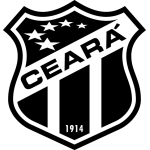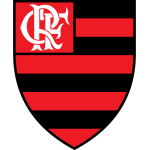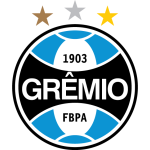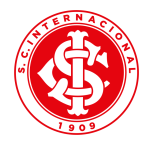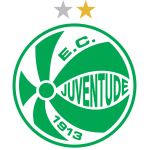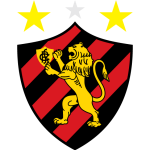Brazilian Football Clubs: Complete Guide to Série A, Série B, and Serie A1 Women Teams (2025)
Football is not only a sport in Brazil, it's a part of life in the country. While European football is known for its competitiveness, in South America, the game is more about creativity and skills. From streets to beaches, from green grounds to wastelands, this sport is the heartbeat of the nation, and the Brazilian football clubs are at the heart of this practice. The popularity of football amongst the Brazilians has added an extra flavour to the progress of the country's years-long dominance in the world. The culture of this sport in Brazil is so wide and diverse that the country is called “o Pais do Futebol” (Country of Football).
A country that has always believed in individual brilliance and skills (Samba Soccer) has won the most number of FIFA World Cups (five times) so far, outlining its supremacy on the global stage. The foundation of this unwavering success starts at home, with a passionate fanbase and a well-organized league system that functions like a talent-producing pipeline.
From Brazilian Serie A teams like Flamengo, Palmeiras, and Santos to hungry clubs in Serie B, the growth of the country's club football is being shaped. Amidst this, let's not forget about Campeonato Brasileiro de Futebol Feminino, where women players are also touching the sky, bringing the Brazilian magic to the global stage while also making it more prominent in Europe. Whether it's grit, stylish football, and unorthodox individual brilliance, Brazilian football teams never fail to amaze the fans. From Pele to Neymar to the likes of Vinicius Jr, the tradition of producing some of the best footballers in the world just goes on and on. Briefly put, if you want to know football in full detail, you need to begin with Brazil.
Brazilian Football Teams: History and Evolution of Football Teams in Brazil
Charles Miller is regarded as the pioneer of football in Brazil. The man with an English root introduced the game to the Latin American nation back in the 1800s. Rich people adopted this as a relaxing game, but with no time, it caught the attention of the masses before getting turned into the identity of Brazil. By the early 1900s, the country saw many Brazilian football clubs like Flamengo and Santos coming into existence and gaining massive followers.
The real journey of the country's football began when Serie A was established in 1971, and with the inception of this top-tier division, things got real. That's when an organised Brazilian football league system came into existence, pulling teams from across the nation to fight for ultimate glory. Now, in the 21st century, football teams in Brazil are not only followed and loved by the locals, but their history and expeditions have also influenced fans across the globe. It's just magical.
Brazilian Football League System
The Brazilian football league system works just like European divisions. But what makes it unique and fascinating is the integration of both State Championships and National Leagues. At the top of the league system, we have Serie A, where big Brazilian football clubs like Sao Paulo, Flamengo, and Palmeiras battle it out for top honours. Below that, there are Serie B, Serie C and Serie D.
Promotion and relegation work just like in any other European league. The bottom clubs of the Brazilian Serie A get relegated to Serie B, while the top clubs of the latter earn promotion to the first division. These four-layered league divisions are controlled and supervised by the Brazilian Football Confederation (CBF).
The most intense part of the country's football is the existence of the State Championships, which are organized every year, where each of Brazil's 26 states hosts tournaments like Campeonato Carioca and Campeonato Paulista. This system gives exposure to the small regional Brazilian football teams that give their everything to qualify for the national competitions.
Brazilian Football Pyramid
The Brazilian football pyramid provides access to both elite clubs and grassroots level teams to a multi-layered league system. There are four national divisions in the country - Serie A, B, C and D, all of which are governed by CBF. All major professional and semi-professional Brazilian football clubs participate in these competitions. Clubs with the lowest points face relegation from one league to another, while clubs with the highest points climb up the pyramid. There are 20 clubs in each league, except the Serie D, where 64 teams participate every season, with all the clubs pitted in eight different groups.
Above all, the Brazilian football league system also has its identity rooted in the State Championships. Every state of the country has its own championship tournament, just like Campeonato Carioca. This can be considered the foundation of Brazilian football, from which smaller teams can enter the national tiers through qualifications. The Brazilian football pyramid can be complex, but it has no shortage of drama, intensity, and talent.
Most Successful Brazilian Football Teams
The Brazilian football pyramid has over 200 clubs and almost every one of them has a different story to tell. From Santos to Flamengo, there are hundreds of football teams in Brazil that have a lasting impact on club football globally. Now let's take a look at the top 10 most successful Brazilian football teams.
| Club | Founded | Trophies |
|---|---|---|
| Fluminense | 1902 | 7 |
| Atlético Mineiro | 1908 | 10 |
| Internacional | 1909 | 10 |
| Grêmio | 1903 | 14 |
| Corinthians | 1910 | 15 |
| Cruzeiro | 1921 | 17 |
| Santos | 1912 | 17 |
| São Paulo | 1930 | 20 |
| Flamengo | 1895 | 23 |
| Palmeiras | 1914 | 23 |
Brazilian Série A Teams
The Brazilian Serie A is the heart of the country's football league system. It's the top division tournament where the best 10 Brazilian football clubs participate every year. The bottom four teams always face relegation from the top-tier and play in Serie B, whereas the top four clubs from the second division get promoted to Serie A. Botafogo are the defending champion of Brazilian Serie A. This top-tier league is the face of the country's football structure.
| Team | City | Founded | Home Stadium |
|---|---|---|---|
| Flamengo | Rio de Janeiro | 1895 | Maracanã |
| Cruzeiro | Belo Horizonte | 1921 | Mineirão |
| Palmeiras | São Paulo | 1914 | Allianz Parque |
| Bahia | Salvador | 1931 | Arena Fonte Nova |
| Bragantino | Bragança Paulista | 1928 | Nabi Abi Chedid Stadium |
| Botafogo | Rio de Janeiro | 1904 | Estádio Nilton Santos |
| Mirassol | Mirassol (São Paulo) | 1925 | Estádio Municipal José Maria de Campos Maia |
| São Paulo | São Paulo | 1930 | Morumbi |
| Ceará | Fortaleza | 1914 | Castelão |
| Internacional | Porto Alegre | 1909 | Beira-Rio |
| Corinthians | São Paulo | 1910 | Neo Química Arena |
| Fluminense | Rio de Janeiro | 1902 | Maracanã |
| Atlético Mineiro | Belo Horizonte | 1908 | Arena MRV |
| Grêmio | Porto Alegre | 1903 | Arena do Grêmio |
| Vitória | Salvador | 1899 | Barradão |
| Vasco da Gama | Rio de Janeiro | 1898 | São Januário |
| Santos | Santos | 1912 | Vila Belmiro |
| Fortaleza | Fortaleza | 1918 | Castelão |
| Juventude | Caxias do Sul | 1913 | Alfredo Jaconi |
| Sport Recife | Recife | 1905 | Ilha do Retiro |
Brazilian Série B Teams
Just like Serie A, there are also 20 Brazilian football clubs in the second-tier division of the country. At the end of every season, the top four teams are promoted to the top-tier national league, while the bottom four go down to Serie C. In order to stay alive, the Brazilian football teams engage in intense battles to stay alive or earn promotion. In 2024, Santos emerged as the winners of Serie B.
| Team Name | City | Founded | Home Stadium |
|---|---|---|---|
| Goiás EC | Goiânia | 1937 | Estádio da Serrinha |
| Coritiba FC | Curitiba | 1909 | Estádio Couto Pereira |
| Grêmio Novorizontino | Novo Horizonte | 1922 | Estádio Jorge Ismael de Biasi |
| Chapecoense | Chapecó | 1973 | Arena Condá |
| Remo | Belém | 1901 | Baenão (Estádio Evandro Almeida) |
| Criciúma EC | Criciúma | 1947 | Estádio Heriberto Hülse |
| Cuiabá EC | Cuiabá | 2001 | Arena Pantanal |
| Avaí FC | Florianópolis | 1923 | Estádio da Ressacada |
| Vila Nova FC | Goiânia | 1943 | Estádio Onésio Brasileiro Alvarenga |
| CRB | Maceió | 1912 | Estádio Rei Pelé |
| Athletico Paranaense | Curitiba | 1924 | Arena da Baixada |
| Athletic Club (MG) | São João del-Rei | 1906 | Arena Sicredi |
| Atlético Goianiense | Goiânia | 1937 | Estádio Antônio Accioly |
| América Mineiro | Belo Horizonte | 1912 | Estádio Independência |
| Volta Redonda FC | Volta Redonda | 1976 | Estádio Raulino de Oliveira |
| Ferroviária | Araraquara | 1950 | Estádio Fonte Luminosa |
| Paysandu SC | Belém | 1914 | Estádio da Curuzu (Mangueirão) |
| Amazonas FC | Manaus | 2019 | Arena da Amazônia |
| Botafogo-SP | Ribeirão Preto | 1918 | Estádio Santa Cruz |
| Operário Ferroviário | Ponta Grossa | 1912 | Estádio Germano Krüger |
Campeonato Brasileiro de Futebol Feminino Teams (Brazil Serie A1 Women)
The Campeonato Brasileiro de Futebol Feminino Série A1 is the top division women’s football league in Brazil, a landmark initiative promoting football of the highest order in the football playing women’s football community in the country. The Brazilian federation (CBF) founded this in 2013, and many top Brazilian football clubs like Palmeiras, Corinthians, Sao Paulo and Flamengo also have teams in this league. It has sixteen teams engaging in fierce battles for the national trophy. The Campeonato Brasileiro de Futebol Feminino plays a vital role in bringing out the best female talents in the country, showcasing the talent in front of the world.
| Team Name | City | Founded | Home Stadium |
|---|---|---|---|
| Corinthians | São Paulo | 1997 | Estádio Parque São Jorge |
| Palmeiras | São Paulo | 1997 | Estádio Nelo Bracalente |
| 3B da Amazônia | Manaus | 1998 | Arena da Amazônia |
| São Paulo | São Paulo | 1983 | Estádio do Morumbi |
| Ferroviária | Araraquara | 2001 | Estádio Fonte Luminosa |
| Flamengo | Rio de Janeiro | 1995 | Estádio da Gávea |
| Fluminense | Rio de Janeiro | 2018 | Laranjeiras |
| Grêmio | Porto Alegre | 1983 | Arena do Grêmio |
| Internacional | Porto Alegre | 1983 | Estádio Beira-Rio |
| Cruzeiro | Belo Horizonte | 2019 | Arena Gregorão |
| América Mineiro | Belo Horizonte | 1912 | Independência |
| Bahia | Salvador | 2019 | Arena Fonte Nova |
| Real Brasília | Brasília | 2019 | Estádio Defelê |
| Bragantino | Bragança Paulista | 2020 | Nabi Abi Chedid |
| Juventude | Caxias do Sul | 1990 | Estádio do SESI |
| Sport Recife | Recife | N/A | Ilha do Retiro |








